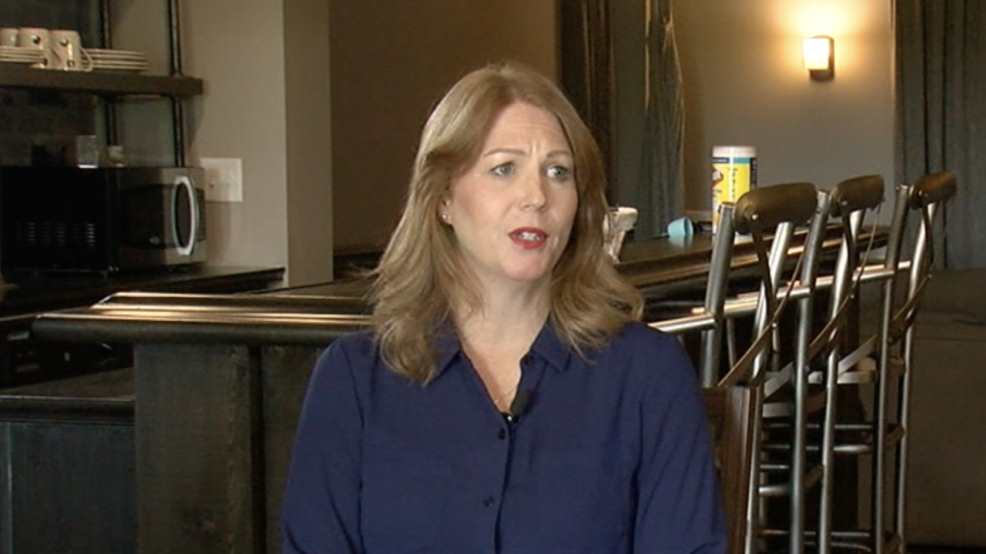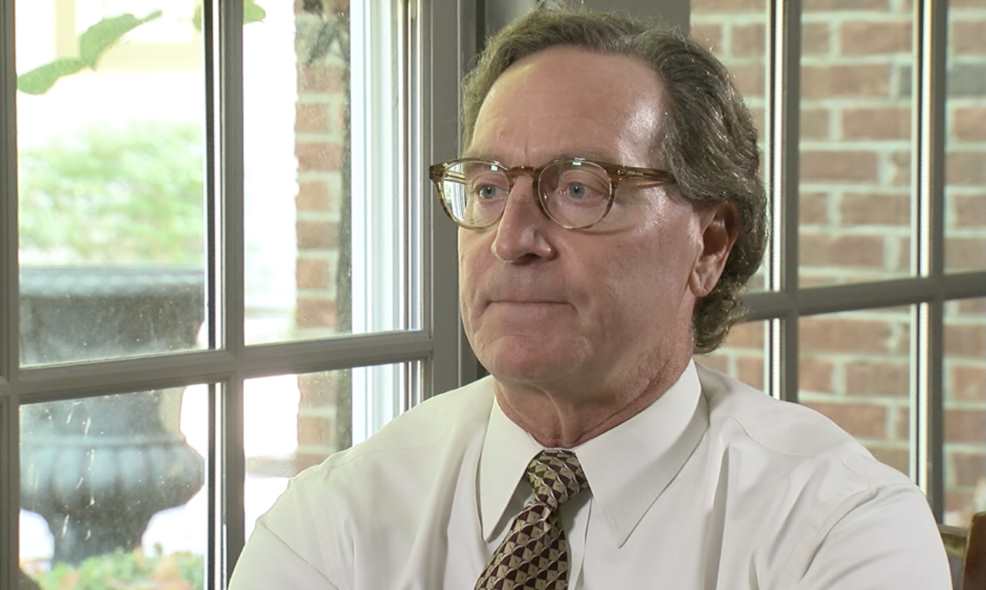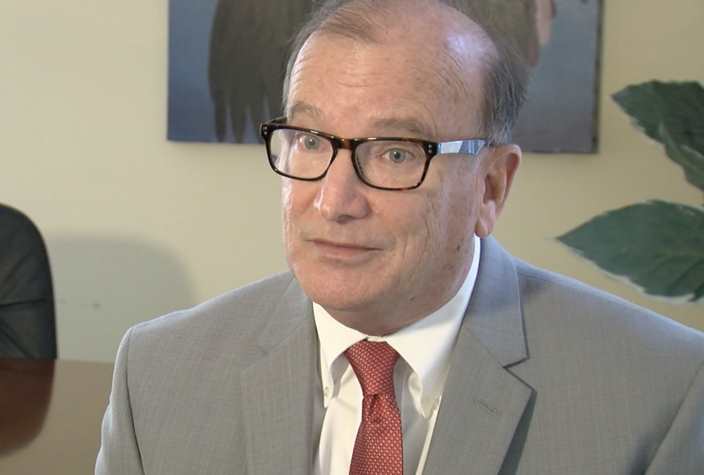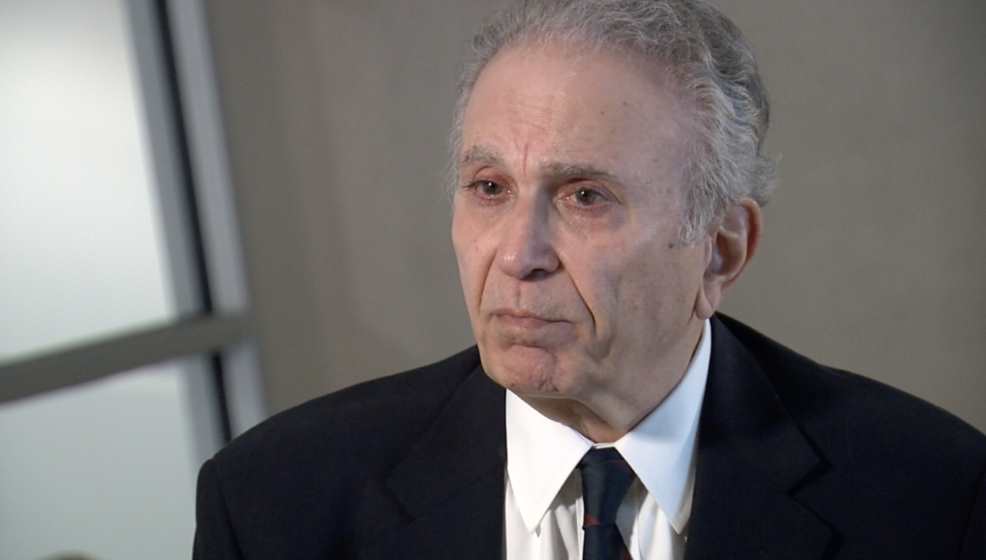|
Abuse survivors say statute of limitations keeps priests and the church from taking responsibility
By Craig Cheatham, Paula Christian And Dan Monk
Christy Miller doesn’t want the Catholic Church’s money. She just wants the church to pay. “It was never about the money for me. It was about justice,” she said. “If it hits their pocketbook, they’re more apt to change. That’s why the money plays a role.” Miller sued the Archdiocese of Cincinnati in 2003, alleging her high school religion teacher, the Rev. Thomas Brunner, sexually abused her for two years in the mid 1980s. Brunner resigned in 2003 prior to the Vatican removing him from the priesthood for abusing teenage girls. But that didn’t matter to the Ohio Supreme Court, which dismissed Miller’s case because she didn’t file before she turned 20, as required by state law on civil statute of limitations at the time. As part of a three-month investigation into alleged priest abuse, the WCPO I-team reviewed dozens of lawsuits against the Archdiocese of Cincinnati, most of them dismissed because the statute of limitations had expired. That shielded the archdiocese against prosecutors and trial lawyers who’ve forced public disclosure and big cash settlements in other states. “There is no question that Ohio is one of the worst states in the country at this point,” said Marci Hamilton, CEO of Child USA, a Philadelphia-based nonprofit that has lobbied for statute of limitations reform in all 50 states. “It is falling farther and farther behind.” Now, some Ohio lawmakers want to extend the civil and criminal statutes of limitations to make it easier for victims of sexual assault to report crimes and sue their abusers. If successful, it could cost the Archdiocese of Cincinnati more than $50 million, based on settlements in similarly-sized dioceses in states that have already passed new civil statutes of limitation. One Ohio lawmaker is proposing a one-time window to give victims of childhood sexual assault three years to revive civil claims that are already too old to pursue under the current law. That could open the door to hundreds of new lawsuits and unleash a new wave of disclosure about sexual abuse including with the clergy. Ohio is one of the few states that still has an age limit on rape offenses, 25 years from the time a victim turns 18. The state’s civil restriction was modified in 2006 to let victims file lawsuits until they turn 30, but that’s still “very short” compared to other states, Hamilton said. “The church needs to be held accountable,” Miller said. “This man was abusing girls long before he abused me and obviously continued abusing after me.” The Archdiocese of Cincinnati declined an interview for this story. While it provided some answers to WCPO’s written questions, it did not respond to questions about the statute of limitations in sexual assault cases. The Diocese of Covington did not respond to eight requests for an interview or information, made by phone and email, from WCPO over several weeks. Then last week, days away from the release of this I-Team series, a spokeswoman for the diocese released a statement that an independent review of priest files dating back to 1950 was underway by two former FBI agents and that a report would be made public once the review is finished. Hamilton hopes that new laws will force the Catholic Church to reveal everything it knows about priest sexual abuse. “Until you can do a lawsuit which requires them to publish and reveal what’s in their secret archives, they hold all of the cards,” Hamilton said. “What you get with these windows in place, you get the truth. And it really is the only way we’re going to get the truth.” Ohio Rep. John Rogers, a Cleveland area Democrat, is seeking co-sponsors for a bill he hopes to introduce by year’s end to eliminate the criminal statute of limitations for rape and raise the age at which victims can no longer file claims to 55. It would also make Ohio the 16th state to adopt a lookback window for expired claims. “Often times, it’s not until later in life that people are actually willing to even talk about the fact that they were sexually abused or assaulted as a child,” Rogers said. “This would give them the opportunity to seek civil recourse if they so choose.” Rogers has about 10 co-sponsors so far, including Rep. Brigid Kelly, a Democrat from Ohio’s 31st District, which includes Norwood, Amberley Village, Silverton and Fairfax. While Rogers declined to speculate on the bill’s prospects, Gov. Mike DeWine and Attorney General David Yost have both endorsed statute of limitations reform this year. Hamilton said the bill has a chance. “This has been a banner year for these laws. We’ve never had this much activity,” Hamilton said. “And we have states that I would have told you 10 years from now might not do it, that have already enacted legislation. So, I expect Ohio to start moving more quickly just like everybody else.” ‘That’s a lot for anybody’ Miller is painfully aware of the link between church secrets and Ohio’s statute of limitations. She was 14 when, she said, Brunner manipulated her into a two-year sexual relationship that would impact the rest of her life. “I still have trust and intimacy issues today because of that abuse,” she said. Brunner met her as a freshman at Mt. Notre Dame High School, where he led music ministry. He sent her hand-written cards and compared their relationship to “The Thorn Birds,” a 1983 TV mini-series about forbidden love between a priest and a younger woman, Miller said.
WCPO attempted to contact Brunner by leaving messages on two phone numbers tied to his last known address in Dayton, and through messages sent to two email addresses connected to him through a public records search. He did not respond to those messages. It was 2002 when Miller began to recognize the impact of that experience. That’s when the Boston Globe’s investigation of priest sexual abuse sparked outrage and lawsuits all over the country, Cincinnati included. “All these little things started coming up,” she said. “You start having dreams and nightmares about what happened and why it happened and how it happened and all of that comes flooding back, and that’s a lot for anybody to deal with.” So Miller contacted attorney Konrad Kircher, who at the time was filing many highly-publicized lawsuits against the Archdiocese of Cincinnati. “I had about 90 people who actually pursued the litigation all the way to the Supreme Court,” Kircher said. Meanwhile Miller lobbied hard for reform at the statehouse. She co-founded the Cincinnati chapter of the Survivors Network of those Abused by Priests, also known as SNAP, and used her story of abuse to sway lawmakers that change was needed. “You would be amazed at the number of senators and representatives that came up to us and said, ‘That happened to me too.’ And still voted against the legislation,” Miller said. The result was bittersweet for Miller. Legislators passed a new law in 2006 to expand Ohio’s statute by 10 years. But Catholic Church lobbying led to the last-minute removal from the bill of a window that would have revived outdated sexual assault claims for one year, she said. Miller worries the Catholic Church’s clout will continue to make it difficult to change the statute of limitations law. But Hamilton thinks Ohio has a strong chance at making a change. A 2018 grand jury report by Pennsylvania’s attorney general has prompted a new wave of disclosures, lawsuits and criminal investigations that she believes will make it easier for Ohio politicians to embrace a three-year window. “The church can lobby all it wants, but I have to say anybody who is still deferring to the Catholic bishops on child sex abuse just doesn’t care,” she said. ‘We really had no choice’ The impact of new statute of limitations laws has hit Catholic dioceses hard nationwide. When California opened a one-year window in 2003 allowing abuse victims to file claims from decades before, it led to hundreds of new lawsuits and more than $1 billion in settlements. In Minnesota it led to 1,000 new lawsuits and caused the Archdiocese of St. Paul and Minneapolis and dioceses in Duluth, St. Cloud and New Ulm to file for bankruptcy. Since New York opened its one-year window in August, survivors have filed 975 new complaints. But any reform here would be tempered by the fact that the Archdiocese of Cincinnati disposed of 210 sexual assault claims cheaply in the early 2000s. That’s when Mike Allen became the first prosecutor in the country to win a criminal conviction against a Catholic archdiocese in 2003. “I’m this Catholic altar boy, grew up Catholic, never so much of a hint of any of this stuff when I was growing up,” Allen said. “But standing in a courtroom with the Archbishop there, it was something I’ll never forget.” Allen’s office impaneled two special grand juries and investigated 75 to 80 allegations of priest sexual abuse. “Although dozens of victims came forward with credible reports of abuse, the statute of limitations clearly barred nearly all of these crimes from being prosecuted,” Allen told the media in 2003. Allen reached a deal with the archdiocese. Then-Archbishop Daniel Pilarczyk signed a no-contest plea on behalf of the church, convicting it of failing to report five felony sex crimes by priests. The church also established a $3 million settlement fund for victims who agreed to waive their rights to pursue future lawsuits. The deal was immediately criticized by abuse survivors’ lawyers, who were already pursuing claims against the church. “No admissions of guilt. No convictions against any individuals,” Kircher said. “I think the archdiocese had good lawyers. I think Mike Allen had mixed emotions about what he was doing.” "It was my thought at the time, and again 18 years later I think I was right about it, we wanted to get something for those victims, because they would not have been able to pursue the cases in the civil courts because of the statute of limitations,” said Allen. Attorney Janet Abaray filed a motion to unravel the deal, arguing that “there is a high likelihood that participants in the settlement fund will be grossly undercompensated.” Her evidence included draft documents of the settlement in which Allen proposed a $5 million victim fund and the church countered at $2 million. The archdiocese settled on $3 million because it was the highest amount it could pay without seeking Vatican approval, according to court filings. “Here’s the point that some people didn’t get,” Allen said. “We really had no choice. I mean, the archdiocese could have said, ‘Go pound sand.’ And those victims would have had no recourse whatsoever because of the statute of limitations. So, I felt good about it at the time. And I still do. Now, was $3 million enough to compensate those victims? Of course not.” In the end, 120 victims received about $27,000 each from the Cincinnati settlement, making it the fifth-lowest average payment among 174 church settlements signed since 1984, according to the watchdog group Bishop Accountability . Those victims got much less than what attorney Robert Steinberg negotiated with the Diocese of Covington two years later. That $90.5 million class-action settlement with the Diocese of Covington, finalized in 2009, is still the fifth largest on record, based on the list at Bishop Accountability. Kentucky’s statute of limitations wasn’t much different from Ohio’s at the time, but Steinberg convinced attorneys for the Diocese of Covington that his legal arguments would win in court. So, the diocese attorneys never raised the statute of limitations as a defense. Steinberg had other advantages that Allen did not, including a court order that forced the Covington diocese to hand over secret files. “There were 17,000 internal (abuse) complaints,” Steinberg said. “Their attorneys could see what they were dealing with.” In the end, the diocese paid $251,431 to each of the 252 victims – nine times more than what the Archdiocese of Cincinnati paid per victim. The Covington settlement also established a $5.7 million counseling fund. The Cincinnati Archdiocese has also paid for counseling for abuse victims. It spent $10.9 million on legal expenses, settlements and counseling for victims of clergy abuse, according to its annual reports. Miller said she saw a counselor for 10 years, paid for by the archdiocese, after her attorney arranged for her to meet with now Auxiliary Bishop Joseph Binzer. “It’s a feel-better thing that they do,” she said. “It doesn’t rectify the situation. It doesn’t stop the abuse. It doesn’t stop them from moving the abusers around. It doesn’t stop them from not turning them into law enforcement. It doesn’t stop anything.” “They’re not sorry for it,” Miller said. “They’re just sorry they got caught.
|
.
Any original material on these pages is copyright © BishopAccountability.org 2004. Reproduce freely with attribution.



